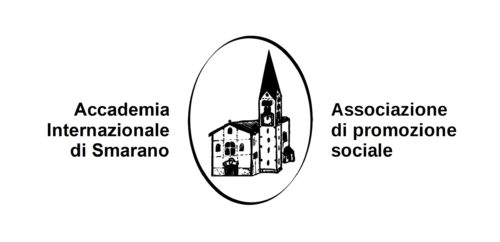Our courses, our teachers
Vienna and Europe, Part III: 18th century
TOCCATAS, FANTASIES & SONATAS
Smarano (Predaia, Italy)
22 July – 2 August 2024
The 2024 Academy concludes the three-year cycle dedicated to Vienna, one of the nerve centers of European musical culture. The third year focuses on late Baroque composers, such as Gottlieb Muffat and Joseph Eberlin and their contemporaries such as Alessandro and Domenico Scarlatti, Giovanni Benedetto Platti, Johann Gottfried Walther, Carl Philipp Emanuel Bach, Johann Ludwig Krebs and, of course, J.S. Bach. Alongside the usual historical keyboards (organ, clavichord, harpsichord), an incursion into the world of fortepiano is also planned, in particular with the Sonatas of Haydn and Mozart. Particular attention will then be paid to two composers who had decisive influences on keyboard music: the Neapolitan Gregorio Strozzi at the end of the seventeenth century and the Roman Muzio Clementi at the end of the eighteenth century.
Teachers
Clavichord: J.S. Bach, C.P. E. Bach, J. Haydn, W.A. Mozart
Joel Speerstra (teacher and researcher at the Academy of Music and Drama, University of Gothenburg)
Ulrika Davidsson (faculty member of Ljungskile folkhögskola and Göteborg International Organ Festival)
Organ I: J.S. Bach, J.G. Walther, J.L. Krebs, J. Eberlin, G. Muffat
William Porter (Professor of Organ at the Eastman School of Music)
Hans Davidsson (Artistic Director of the Göteborg International Organ Academy and Music Director at the church of Älvsborg in Göteborg)
Organ II and Improvisation: Alessandro & Domenico Scarlatti, G.B. Platti and Partimenti
Edoardo Bellotti (Professor of Historical Keyboards and Harpsichord at the Eastman School of Music, University of Rochester – NY)
Harpsichord: Alessandro & Domenico Scarlatti, G.B. Platti, M. Clementi
Enrico Baiano (Professor of harpsichord, clavichord and fortepiano at the ‘Santa Cecilia’ Conservatory in Rome)
Seminars:
Music Sources and Performance
Armando Carideo (Chairman of the Istituto dell’organo storico italiano)
Gregorio Strozzi, a Neapolitan bridge between 1600 and 1700
Alessandro Albenga (organist, Cappella Musicale S. Maria dell’Anima in Rome)
18th century Music in Vienna
Greta Haenen (Musicologist at the Hochschule für Künste Bremen and Universität des Saarlandes Saarbrücken)
Courses
CLAVICHORD
For centuries considered a fundamental instrument for teaching keyboard and in particular the organ, the clavichord is daily taught in the Academy’s course plan. Smarano uses three pedal clavichords, as well as other small instruments. To the necessary technical and practical notions for a correct approach to the instrument, especially for those who are just starting out, Joel Speerstra and Ulrika Davidsson will add some interesting analyzes of compositions by J. S. Bach and C. P. E. Bach. A greater understanding of the rhetorical structure of the pieces and of the compositional path becomes essential for a more conscious and convincing performance.
FORTEPIANO
Using the beautiful copy of a fortepiano by Johann Andreas Stein, Ulrika Davidsson will introduce participants to the technique of this instrument and will analyze some Sonatas by Haydn and Mozart. At the end of the eighteenth century, the dynamic possibilities of the fortepiano slowly led the harpsichord into oblivion; the repertoire for this instrument will not be without influences on the other keyboards, including the organ.
ORGAN, GERMAN MUSIC
Bill Porter and Hans Davidsson will guide the participants through a selection of compositions by J. S. Bach, Walther, Gottlieb Muffat and Krebs, underlining, alongside continuity with tradition, the stylistic and aesthetic innovations of the late Baroque organ repertoire. The German-style Ghilardi Organ of the parish church will be the most used instrument for this repertoire.
ORGAN AND PARTIMENTI
Alessandro Scarlatti and his son Domenico are prominent personalities in Baroque musical culture. Ralph Kirkpatrick’s studies have recognized Domenico’s important role in the history of keyboard music, while the recent complete publication of the keyboard compositions of Alessandro, known until today prevalently for his vocal and instrumental music, showed his importance in the keyboard repertoire too. In both composers, alongside virtuosity, typical elements of theatre and melodrama appear which can include them among the epigones of the Frescobaldian school, based on “contrasting affects”. Edoardo Bellotti will guide the participants in reading some pages of the two musicians, as well as in a type of apparently incomplete or only sketched musical writing, which therefore requires greater responsibility on the part of the performer who is asked to understand the signs and complete the piece extemporaneously.
The repertoire will be accompanied by improvisation that will study the “Partimenti”(in particular those of Scarlatti and Pasquini), a type of “incomplete” musical writing used as a formidable teaching tool from the early seventeenth century to the early twentieth century.
HARPSICHORD
Enrico Baiano will develop a path on the harpsichord parallel to that of Edoardo, dedicated to Scarlatti and Muzio Clementi. Scarlatti’s sonatas are full of rhetorical elements, theatrical gestures, contrasting affects: ignoring these elements inevitably compromises their performance, which requires solid technical preparation and high stylistic-musical competence. Space will also be given to the youthful sonatas of Clementi, highly esteemed by Beethoven but still little known and underestimated by performers today.
LECTURES
Musical production, like any artistic production, is closely linked to the socio-political events of an era and a geographical area. With the expertise derived from years of studies on the Viennese musical tradition, Greta Haenen will paint an essential picture of eighteenth-century Vienna, for a better understanding of the context in which to place the musical production of the time.
Knowledge and use of reliable and correct sources are the basis of a correct and convincing performance of the musical repertoire. Armando Carideo’s musicological interventions will help participants to orient themselves in the world of modern editions and appreciate the importance of comparing original sources.
Gregorio Strozzi is certainly one of the lesser-known Neapolitan composers. Yet his figure is essential to understanding the developments of keyboard music in Naples between the seventeenth and eighteenth centuries. Alessandro Albenga, who recently studied Strozzi and made a recording, will provide adequate information to better understand and appreciate the Neapolitan musician.
